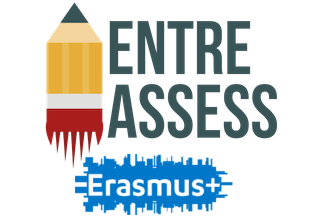 What it is: A rubric is a coherent set of criteria for student’s work that includes descriptions of levels of performance quality on the criteria. The main purpose of rubrics is to assess performances, that is to say the things students would do, make, say or write. The rubric describes a performance, understood either as a process (e.g. a pitch) or as an artefact (e.g. constructed object). The focus is on learning and not on completion of tasks per se.
What it is: A rubric is a coherent set of criteria for student’s work that includes descriptions of levels of performance quality on the criteria. The main purpose of rubrics is to assess performances, that is to say the things students would do, make, say or write. The rubric describes a performance, understood either as a process (e.g. a pitch) or as an artefact (e.g. constructed object). The focus is on learning and not on completion of tasks per se.
How it works: The rubric is a 2D grid where criteria are listed in the left hand column and levels of performance in the upmost row. The individual squares in the grid contain descriptors for the level of performance for each criterion. The rubric may or may not contain a mechanism to attach points or grades to different levels of performance.
Benefits: Rubrics help students understand intended learning outcomes and criteria for success. They guide teacher observations and allow more detailed and objective feedback. If designed for repeated use, over time on several tasks (general rubrics), rubrics help coordinate instruction and assessment.
Challenges: Large numbers of criteria and lengthy descriptors for each level of performance may have negative consequences, particularly with younger students. At the other end of the spectrum, the danger lurking is oversimplifying highly complex behaviours to a very tight set of criteria. It is not easy to write good descriptors for each level and each criterion. More often than not, the theoretical basis on which progression across levels of the rubric has been established is often unclear. Rater bias remains problematic particularly when the levels of performance are vague.
Relevance for entrepreneurial teaching: Teachers often rely on rubrics to assess entrepreneurial performances. The extent to which a rubric helps teachers in capturing the willingness, readiness and ability to put into practice entrepreneurial skills is largely dependent on finding the right mix of observable criteria and being clear on the levels of expected performance. Engaging students in the design of the rubric may be a good idea to fine tune the tool but it will never be perfect. While tempting, equipping ourselves with a rubric for each entrepreneurial skill may result in an unbearable assessment workload. Strategies to prevent “death by rubric” entail coordination with other teachers as well as introducing self-assessment and peer-assessment methods. Last but not least, rubrics should not be considered the “end-of-it-all” of entrepreneurial assessment. Rubrics could conceivably play a constructive role in designing assessment tasks that capture the sheer complexity of behaviours elicited but only if combined with other sources of information.
Applied assessment methods: Formative Assessment, Authentic Assessment, Performance Assessment, Self-assessment, Peer-Assessment
Examples from practice: Plenty of ready-made rubrics, templates and rubric generators (e.g. Rubistar) are freely available online.


